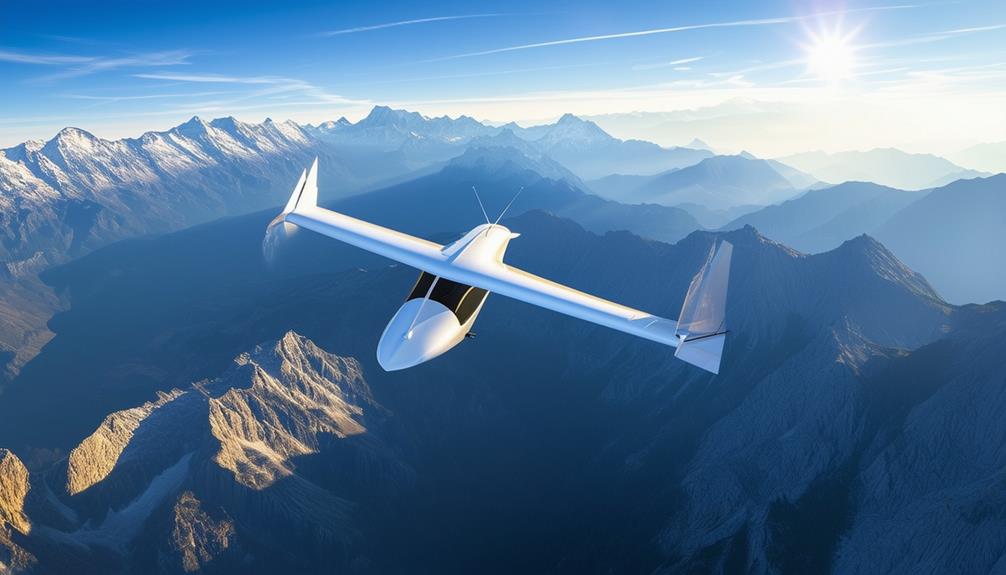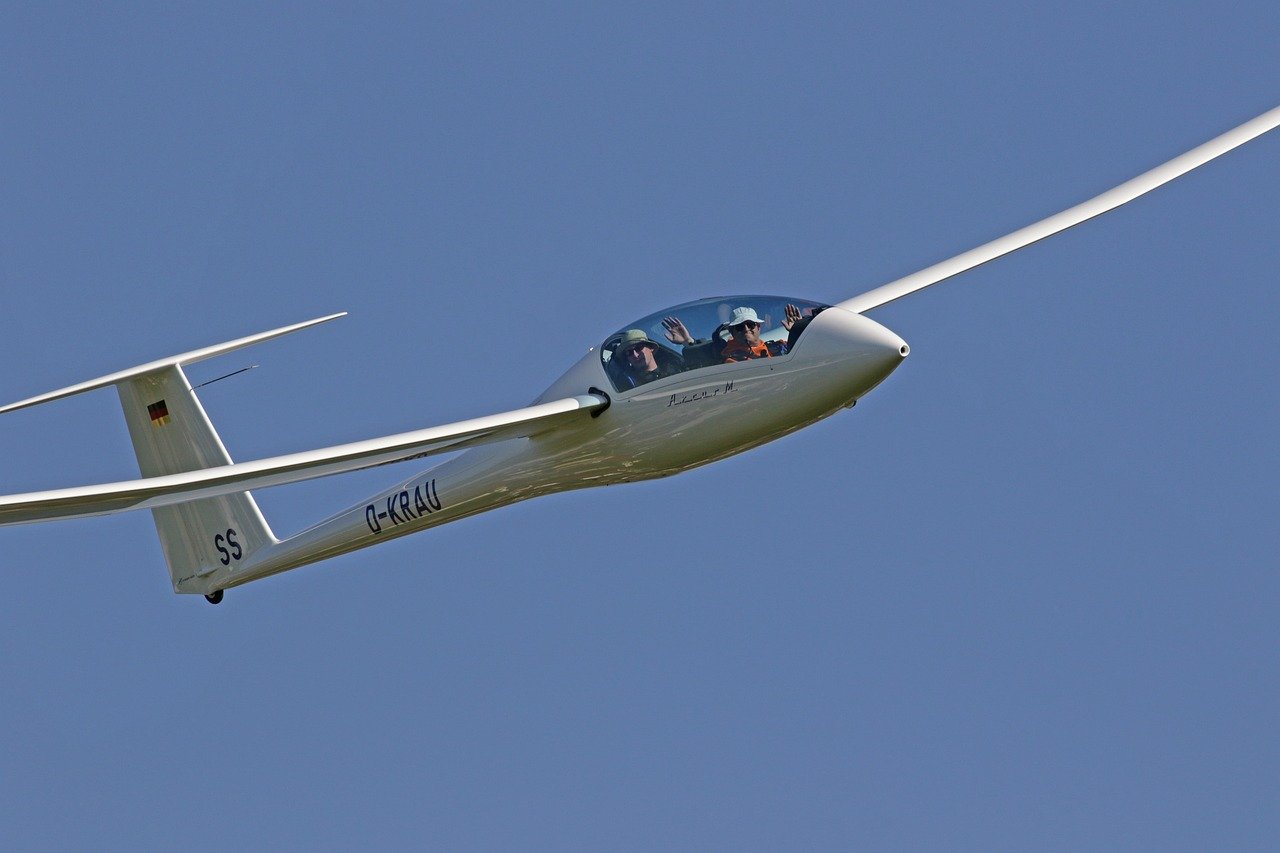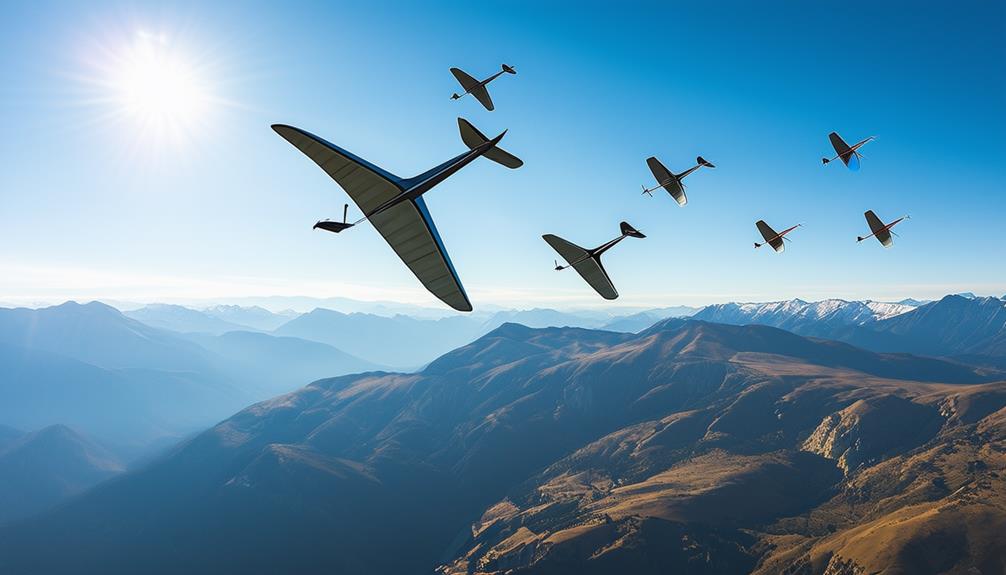The Science of Lift and Drag in Gliding
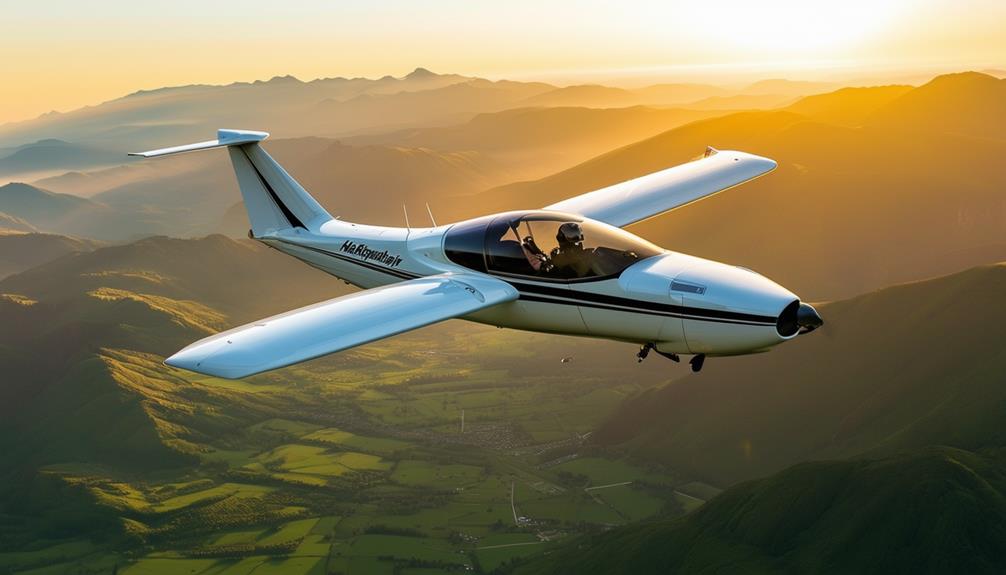
To master the art of efficient gliding, one must understand the science of lift and drag. Lift, generated by the wings as they move through the air, keeps the glider aloft, while drag works against it, reducing forward motion.
Achieving balance between these forces is crucial for optimizing glider performance. By precisely adjusting factors such as the angle of attack and the aerodynamic profile, one can achieve a smoother, more efficient glide. But how do you fine-tune these elements to minimize energy loss and enhance performance?
Key Takeaways
- Lift, generated by the wings, is crucial for maintaining altitude and forward motion in gliding.
- Drag, which opposes motion, manifests primarily as parasitic drag and induced drag.
- The airfoil shape of a glider's wings significantly influences its lift and drag characteristics.
- The lift-to-drag ratio is a key performance metric that indicates the efficiency of energy conversion during gliding.
- Proper management of the angle of attack is essential for balancing lift and drag, preventing stalls, and ensuring efficient flight.
Understanding Lift

To understand how gliders stay airborne, you need to grasp the science behind lift. Lift is the aerodynamic force generated by the glider's wings as they move through the air. This force acts perpendicular to the direction of flight and is crucial for counteracting the glider's weight, enabling it to remain aloft.
Lift isn't uniformly distributed across the wings; it acts through a specific point known as the center of pressure. This point is where the lift force is concentrated, providing the necessary upward thrust to prevent the glider from descending immediately.
For lift to be effective, the glider must convert potential energy from its altitude into kinetic energy. When a glider is at a high altitude, it has stored potential energy. As it descends or moves forward, this potential energy is converted into kinetic energy, which helps maintain lift and forward motion. Understanding this energy trade-off is essential for mastering glider flight.
The Role of Drag
Understanding drag in gliding is essential for optimizing flight performance. Various types of drag affect your glider's efficiency, and identifying strategies to minimize these forces can lead to significant improvements. Let's explore the types of drag and methods to reduce them for optimal glider performance.
Types of Drag
Drag in gliding comes in two main forms: parasitic drag and induced drag. Parasitic drag is the air resistance that opposes your glider's motion, reducing its efficiency. As you increase your speed, parasitic drag also increases, causing more air resistance and forcing you to trade altitude for velocity to maintain forward motion.
Induced drag is a byproduct of lift generation. When your glider produces lift, it creates vortices at the wingtips, resulting in induced drag. This type of drag is more significant at lower speeds and higher angles of attack. While induced drag decreases as speed increases, parasitic drag becomes the dominant force at higher velocities. Balancing these two types of drag is crucial for optimizing your glider's performance.
Effectively managing drag allows you to better control your glider's altitude and speed. By understanding the impacts of parasitic and induced drag on your flight, you can make informed decisions to enhance your gliding efficiency and overall experience.
Reducing Drag Forces
Optimizing glider performance involves balancing parasitic and induced drag, and understanding how to reduce these forces can significantly enhance flight efficiency. Start by focusing on minimizing form drag, which results from your glider's shape. A streamlined design is essential, ensuring the fuselage and wings have smooth, aerodynamic contours that facilitate easy airflow.
Next, address skin friction drag, caused by air resistance over the glider's surface. Maintaining a clean and smooth surface can substantially reduce drag forces. Regular maintenance and cleaning are crucial, as even minor imperfections can increase resistance.
Additionally, consider the overall weight and balance of your glider to maximize efficiency and extend flight duration. A lighter glider experiences less drag and can sustain longer flights. Proper weight distribution is also critical for maintaining stability and efficiency in the air.
Aerodynamic Profiles
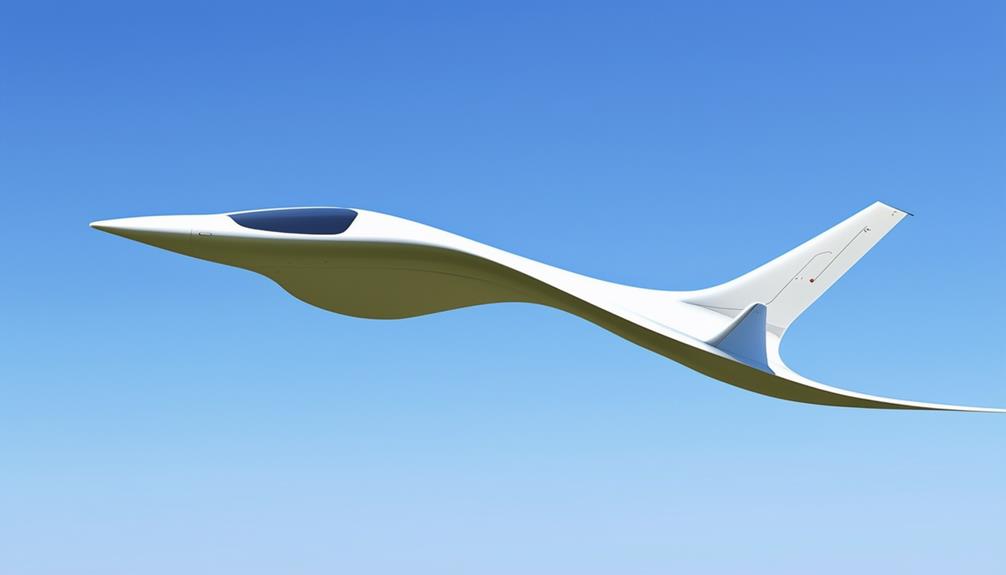
The aerodynamic profile of an airfoil is crucial for reducing drag and enhancing performance. A smooth, cambered surface maintains efficient airflow, generating lift while minimizing resistance. Understanding these factors is key to optimizing your paraglider's flight stability and overall efficiency.
Airfoil Shape Significance
The shape of an airfoil is a pivotal element in determining a paraglider's lift and overall aerodynamic efficiency. A well-designed airfoil shape directly influences the glide ratio and the lift-to-drag ratio, two essential metrics for flight performance. Optimizing these ratios results in a smoother and more efficient glide. The cambered shape of the airfoil is particularly beneficial, as it generates lift by creating pressure differentials between the upper and lower surfaces of the wing.
| Key Factors | Explanation |
|---|---|
| Glide Ratio | Determines how far a paraglider can travel horizontally for every unit of vertical descent. |
| Lift-to-Drag Ratio | A higher ratio signifies more efficient flight with reduced energy loss. |
| Aerodynamic Forces | Forces like lift and drag acting on the wing that influence flight dynamics. |
| Airfoil Shape | The design of the wing's cross-section, crucial for generating lift and controlling drag. |
| Pressure Differentials | Differences in air pressure above and below the wing that create lift. |
Understanding the significance of the airfoil shape illuminates how aerodynamic forces are managed. By focusing on the cambered shape and its impact on lift and drag, one can appreciate the critical role of pressure differentials in maintaining a paraglider's flight.
Surface Smoothness Impact
Ensuring the surface smoothness of a paraglider's aerodynamic profile is crucial for minimizing drag and enhancing flight efficiency. Smooth surfaces improve glide ratios, resulting in smoother and longer flights. A streamlined aerodynamic profile facilitates smooth airflow over the wing, reducing resistance.
A well-optimized cambered profile further enhances airflow efficiency by maintaining steady, uninterrupted air movement across the wing's surface. This not only boosts aerodynamic performance but also improves the paraglider's maneuverability. Reducing surface irregularities ensures the paraglider's profile remains efficient.
In summary, surface smoothness significantly impacts a paraglider's aerodynamic profile and performance in the air. The smoother the surface, the less drag encountered, leading to better glide ratios. Prioritize maintaining a smooth, efficient cambered profile to optimize your paraglider's performance.
Angle of Attack
Adjusting the angle of attack directly influences the lift and drag forces acting on a glider. The angle of attack is defined as the angle between the chord line of the wing and the relative oncoming airflow. Increasing this angle initially generates more lift but also increases drag. However, exceeding a critical angle results in flow separation, causing a dramatic rise in drag and a significant loss of lift, leading to wing stalls. Understanding this critical angle is crucial for safe gliding operations, as surpassing it can compromise safety.
As a pilot, you continuously adjust the angle of attack using the glider's control surfaces to balance lift and drag. Proper management of this angle is essential for maintaining altitude and optimizing performance. If the angle is too low, insufficient lift is generated; if too high, there's a risk of stalling. Mastery of angle of attack manipulation enables you to navigate various flight conditions effectively, ensuring efficient and safe glides. Properly managing the angle of attack prevents wing stalls and maintains steady flight, which is fundamental for successful gliding operations.
Lift-to-Drag Ratio
Mastering the lift-to-drag ratio is critical for efficient and sustained gliding performance. This ratio measures how effectively your glider converts potential energy into forward motion. A higher lift-to-drag ratio means you can travel further while losing less altitude, translating to better efficiency. To optimize this ratio, focus on minimizing drag and maximizing lift. Pay close attention to your glider's aerodynamic design; sleek, streamlined shapes reduce drag, enabling more efficient gliding.
Wing shape is equally important; wings with the right curvature and aspect ratio generate more lift. The angle of attack, or the angle between the wing and the oncoming air, significantly affects the lift-to-drag ratio. Adjusting this angle helps find the sweet spot where lift is maximized and drag is minimized.
Experienced pilots continuously fine-tune these parameters to maintain an optimal lift-to-drag ratio, ensuring top performance throughout the flight. Understanding and mastering these elements will help you glide longer and more efficiently, making the best use of your potential energy.
Optimizing Performance
Optimizing performance in gliding involves fine-tuning your flying speed, angle of attack, and altitude to achieve the most efficient flight. A glider must convert altitude to kinetic energy to maintain an ideal lift-to-drag ratio, which is crucial for optimal performance. Understanding the forces acting on your glider is vital to this process.
Flying at a higher altitude provides more potential energy, enabling the glider to achieve the necessary velocity for peak performance. Adjusting your speed and angle of attack—especially avoiding a high angle of attack that increases drag—ensures maximum efficiency in your glide.
Consider the emotional dynamics involved in gliding:
| Scenario | Feeling |
|---|---|
| Achieving ideal glide ratio | Elation |
| High angle of attack | Frustration |
| Generating velocity | Excitement |
| Rapid altitude loss | Anxiety |
| Smooth descent | Serenity |
Frequently Asked Questions
What Is the Lift Drag Ratio in Gliding?
The lift-to-drag ratio in gliding is a measure of a glider's aerodynamic efficiency. It indicates how effectively the glider converts lift into forward motion while overcoming drag. A higher lift-to-drag ratio means the glider can travel a greater horizontal distance for a given loss in altitude, enhancing its gliding performance.
What Is the Scientific Principle That Helps to Achieve Lift of a Glider?
To achieve lift on a glider, you need to understand both Bernoulli's principle and Newton's third law of motion. Bernoulli's principle explains how pressure differences across the wings create lift, while Newton's third law describes the reaction forces that also contribute to the glider overcoming its weight and staying airborne.
What Is the Theory of Drag and Lift?
Drag opposes your glider's motion, while lift keeps it airborne. Lift is generated by the wings, and both forces act through the center of pressure, which is crucial for flight stability and efficiency.
How Does Lift Work With Gliders?
Lift in gliders is generated by the wings, which create aerodynamic forces perpendicular to the flight direction. This lift counteracts the glider's weight, maintaining stability and balance while the glider trades altitude for velocity.
Conclusion
Mastering the science of lift and drag is essential for efficient gliding. Lift keeps the glider aloft, while drag opposes its motion. By adjusting the angle of attack and optimizing the aerodynamic profile, you can improve the lift-to-drag ratio. This enables smoother and farther glides, maximizing airtime with minimal energy expenditure.

